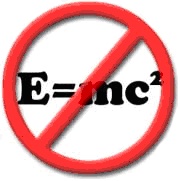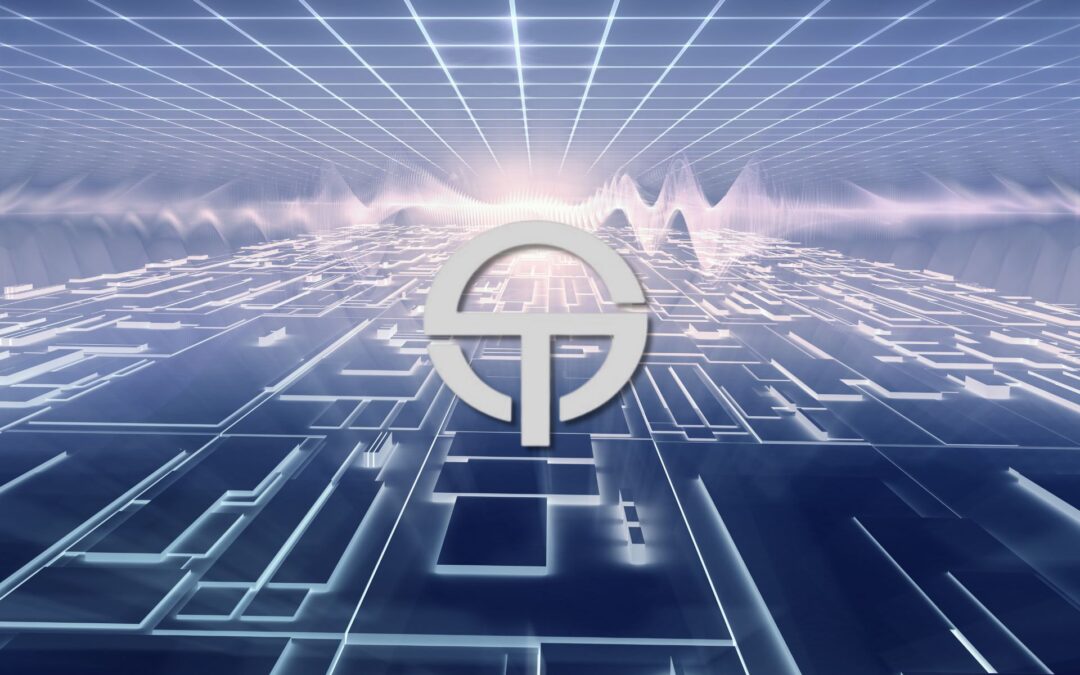The Concept of Theoretical Velocity

The Michelson-Morley Experiment conducted in 1887 opened the door for Albert Einstein. Many say it even inspired him.
To this writer, however, the door was opened much earlier when Isaac Newton’s formula E=mv failed leading to the discovery by an obscure monk of the multiplier effect or squaring of velocity to achieve the right outcome.
The monk deGravesend discovered that by dropping metal balls into soft clay from different heights, the penetration (depth) into the clay or force of the balls was not proportional but exponential to their increase in velocity.
His formula E=mv2 became a foundation formula in physics for many of our gods of science. It didn’t matter that the conclusions drawn from this watershed experiment defied logic. It only mattered that the illogical multiplier effect solved the problem of energy released in an impact of a moving body. The formula worked. That was all that mattered for it provided the right outcome for de Gravesend and for Einstein and others in their own versions describing the physical Universe.
After all, as noted above, Newton ‘s logical formula E=mv had failed. Why then argue with success even if it means accepting in this case that far more energy is released in such impacts than the energy invested to achieve a specific velocity. Something coming from nothing.
To this writer however, Newton’s failed formula was not a failure as it will be shown, rather it was a path to the truth.
Something elemental was missing.
And that is simply that the energy invested in overcoming inertia is retained as the kinetic energy or momentum of any moving body and should be incorporated in calculating total energy released in an impact.
Had Newton added that invested energy amount to the velocity of a moving body the illogical concept of the multiplier effect would have been unnecessary to explain the phenomenon.
From what I can ascertain from the scientific literature Newton was blinded from pursuing a logical answer as to why E=mv did not work because of his belief that God cancelled such impacts, whatever that means.
Had he not been so religious in this one peculiar instance it might have been obvious to him that to achieve any change in velocity, in the overwhelming majority of instances, far more energy is invested in overcoming these restraining forces (inertia) than is invested in the change in velocity. His first law of motion would have certainly supported that.
One only has to accelerate from 0-60 miles per hour in eight seconds or to try to immediately stop a fast moving vehicle (both experiences unavailable to Newton) to acknowledge the preponderance of these restraining forces in proportion to the actual force required to change velocity.
In studies conducted by the Insurance Institute for Highway Safety and accepted by The National Safety Council the stopping distance for vehicles disproportionately increases the faster the vehicle is moving.
In a related perspective deduced from the above studies, to slow down 5 mph from 100 mph to 95 mph (or to increase velocity from 100 mph to 105 mph) takes approximately double the energy to slow down the same 5 mph from 50 mph to 45 mph (or to increase velocity from 50 mph to 55 mph).
Since we know the correct numbers from E=mv2 we can deduce that to achieve an increase or decrease in velocity requires disproportionately far more energy invested to overcome inertia and far less of the energy invested in velocity as the velocity of the body increases.
Therefore, when an impact occurs of a moving body, irrespective of the body’s velocity, only the energy invested and retained in the form of kinetic energy of the mass (the energy invested in overcoming inertia) plus the energy directly invested in velocity is returned, multiplied by the value of the mass.
Nothing more, nothing less.
Logic not metaphysics.
The new formula is E=mv.
This strictly logical formula produces the same numbers as E=mv2 for v represents the theoretical velocity of m if there were no restraints (inertia) on motion change. For example to increase velocity of a mass by 100 mph the theoretical velocity change is 10,000 miles per hour or the velocity change that would have been achieved with the same amount of energy if inertia was not present (not withstanding air resistance, etc.).
Velocity is squared, thanks to deGravesend who gave us the right outcomes (numbers) to arrive at the theoretical velocity, in order to calibrate the total energy invested to achieve any change in velocity, and not to support the preposterous theory that something can come from nothing.
To continue, when matter metamorphoses into energy at the speed of light barrier the same formula E=mv applies, replacing E=mv2 except that the energy invested to achieve that velocity is 99.9997 percent in overcoming inertia as the faster you go under this hypothesis, the greater the proportion of restraining force.
In other words as matter approaches the speed of light barrier time theoretically slows exponentially as velocity increases infinitesimally until no further movement is possible as hypothetically time cannot end and matter cannot exceed the speed of light. Nature’s catch 22.
This view is supported by accelerator experiments with protons that have been bombarded with massive amounts of electrically generated magnetic energy (enough to dim the lights of Batavia, Illinois, a small city) to increase propulsion near the speed of light barrier. No amount of energy invested at that speed resulted in any further perceptible increase in velocity. In fact the protons themselves inflated like balloons simply absorbing the massive amounts of energy.
When conversion to energy occurs as it does with neutral pions, particles of matter, accelerated to just below the speed of light where they explode, the energy released, under this hypothesis, is exactly the energy invested in overcoming inertia retained as kinetic energy plus the amount directly invested in velocity to achieve that speed multiplied by the value of the mass.
Again nothing more, nothing less. Logic, not metaphysics.
To continue, if the movement of light is natural and logical then it is logical to assume that the speed of light has a fixed ratio to the speed of time and not one fixed speed in a vacuum of 299,792.458 kilometers per second irrespective of the time/space.
We know from synchronized atomic clock comparisons here and retrieved from orbit around the Earth that time is elastic. We also like to speculate from accelerator experiments with nuMesons that time near the speed of light barrier is 20 times slower than our time as nuMesons, tiny particles of matter, then live 20 times longer.
The new formula then, under this hypothesis, for the speed of light is:
c= 299,792.458 kilometers per second
vt
vt (the velocity of time) represents Earth time as 1.0 . For the nuMeson near the speed of light vt may be .05 (20 times slower).
In our time/space then the speed of light is 299,792.458 kilometers per second. In the nuMeson’s time/space the speed of light is just under 6 million kilometers per second.
To an observer from our time/space and simultaneously to a space craft observer moving just below the speed of light in the nuMeson’s time/space observing the same beam of light passing, both will measure it independently from their own time/space continuum.
The Earthman will measure it at slightly below 299,792.458 kilometers per second (speed through air is lower). The Astronaut will measure the same light beam at just under 6 million kilometers per second. The light beam has not changed in its movement, which under this hypothesis is unaffected by any time/space. Only the time/space perspective of the observers (made of matter, not energy) has changed.
Again logic, not metaphysics.
Therefore Einstein’s example of the crew of a space ship moving just below the speed of light (say at 290,000 kilometers per second) watching a light beam pass it in the same direction at 299,792.458 kilometers faster that the ship is moving (or at 589,792.458 kilometers per second) yet the light beam is moving only at 299.792.458 kilometers per second is, in light of this inquiry, preposterous !
To this writer, paradoxes belong in religion and fairy tales, not science. Once you start down the quasi-supernatural road there is no end. Paradoxes, zero volume, cosmological constants, singularity, worm holes, winged fairies and on and on into infinity.
To continue, if then the multiplier effect is a hoax, as now seems logically indicated, then E=mc2must be invalid as is c as paradoxically defined since its speed cannot be fixed for the formula to now work without squaring.
It should now begin to become apparent that, as a result of this inquiry, that if we are in an expansion, for which there is considerable red-shift evidence (and perhaps even if we are not in an expansion), that the basic structure of the cosmos is not essentially illogical and quasi-supernatural, as many, influenced by Albert Einstein currently believe.
Rather, perhaps, it is a cosmos that is, in reality, essentially logical and as natural as Mom’s apple pie.
Tovi Sciences
A fatal flaw in the laws of physics
(A scientific study redefining the structure of the Universe)
Copyright © 2004-2023 by Murray Tovi
Futurist. Scientist. Artist.
The designs and inventions of Murray Tovi have been featured in publications such as Vogue, Glamour, House & Garden, Architectural Digest, House Beautiful, Popular Science, Popular Mechanics, and The New York Times.

